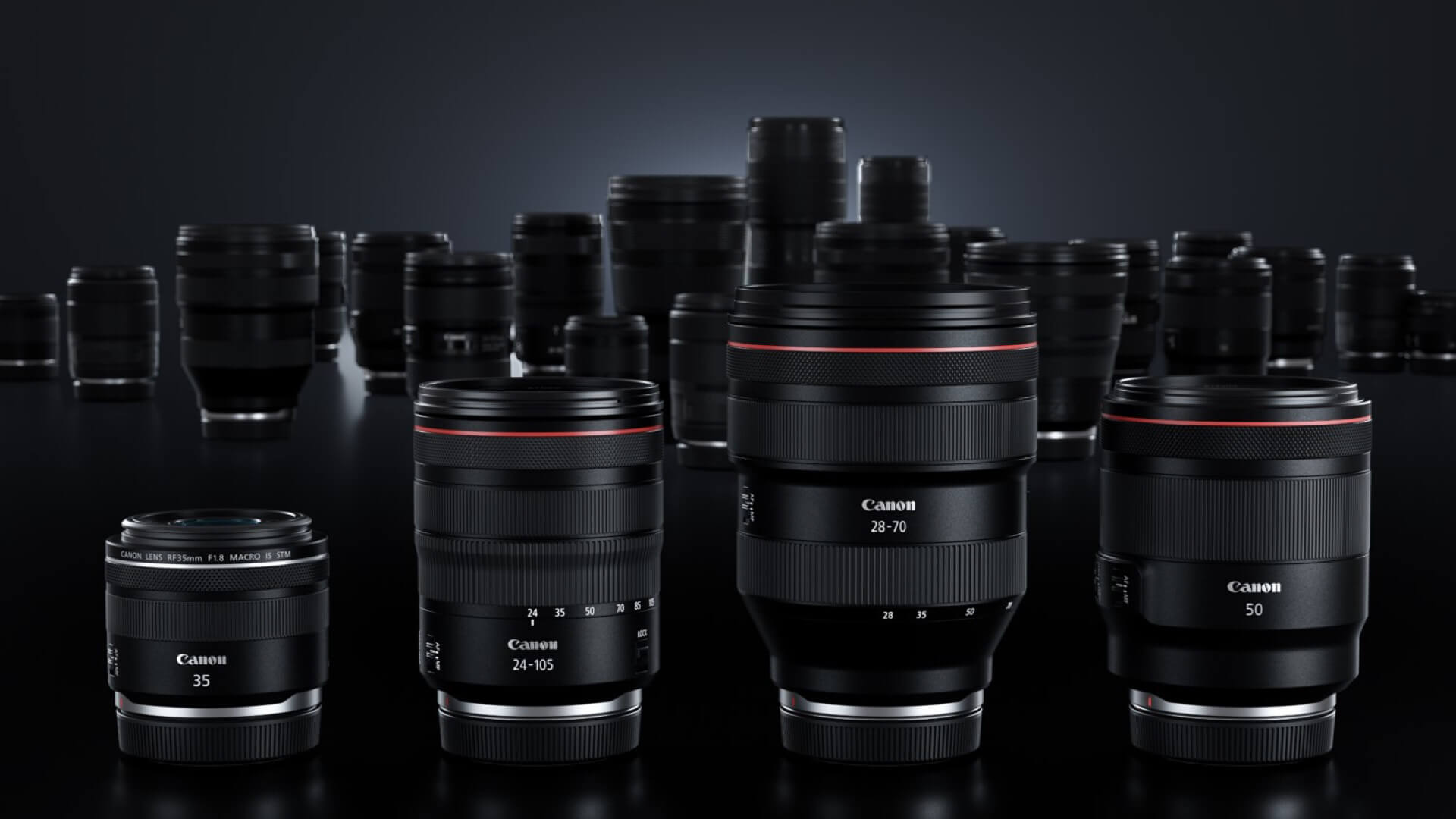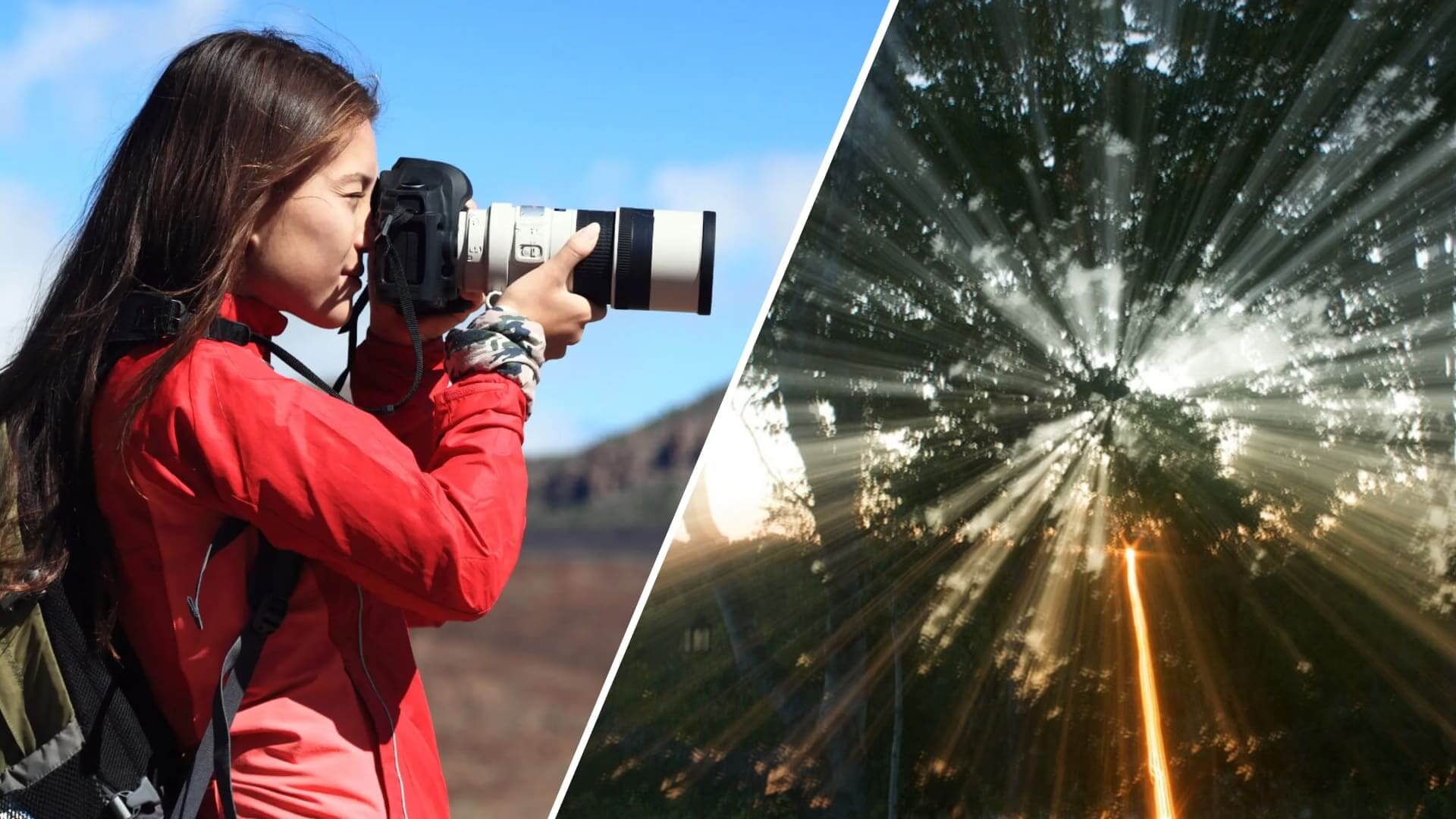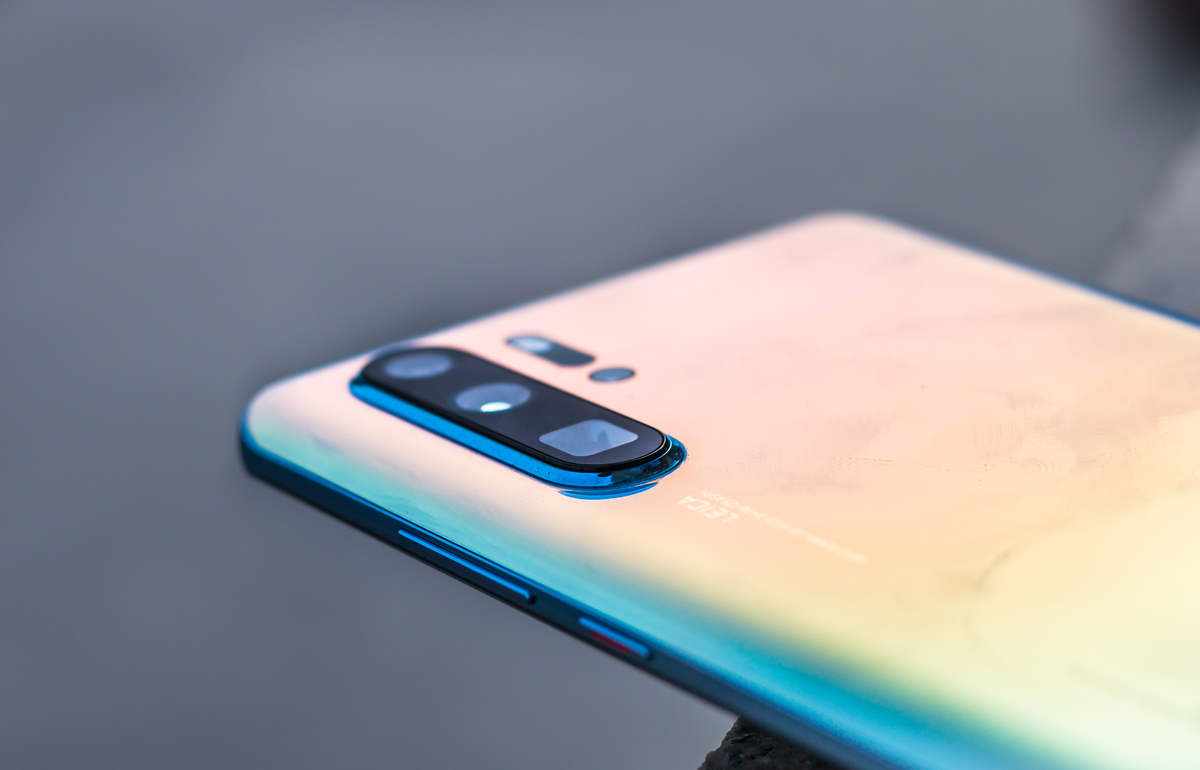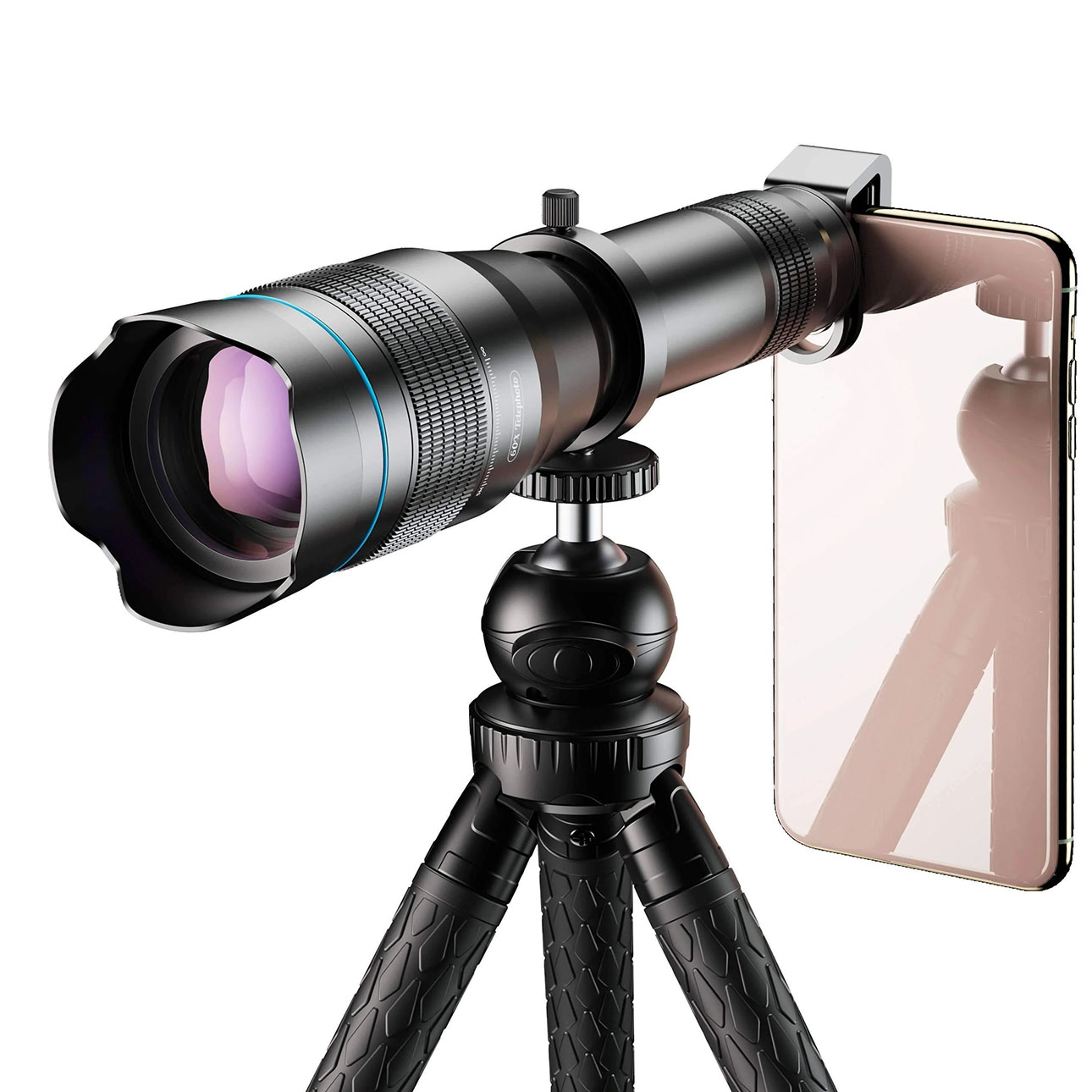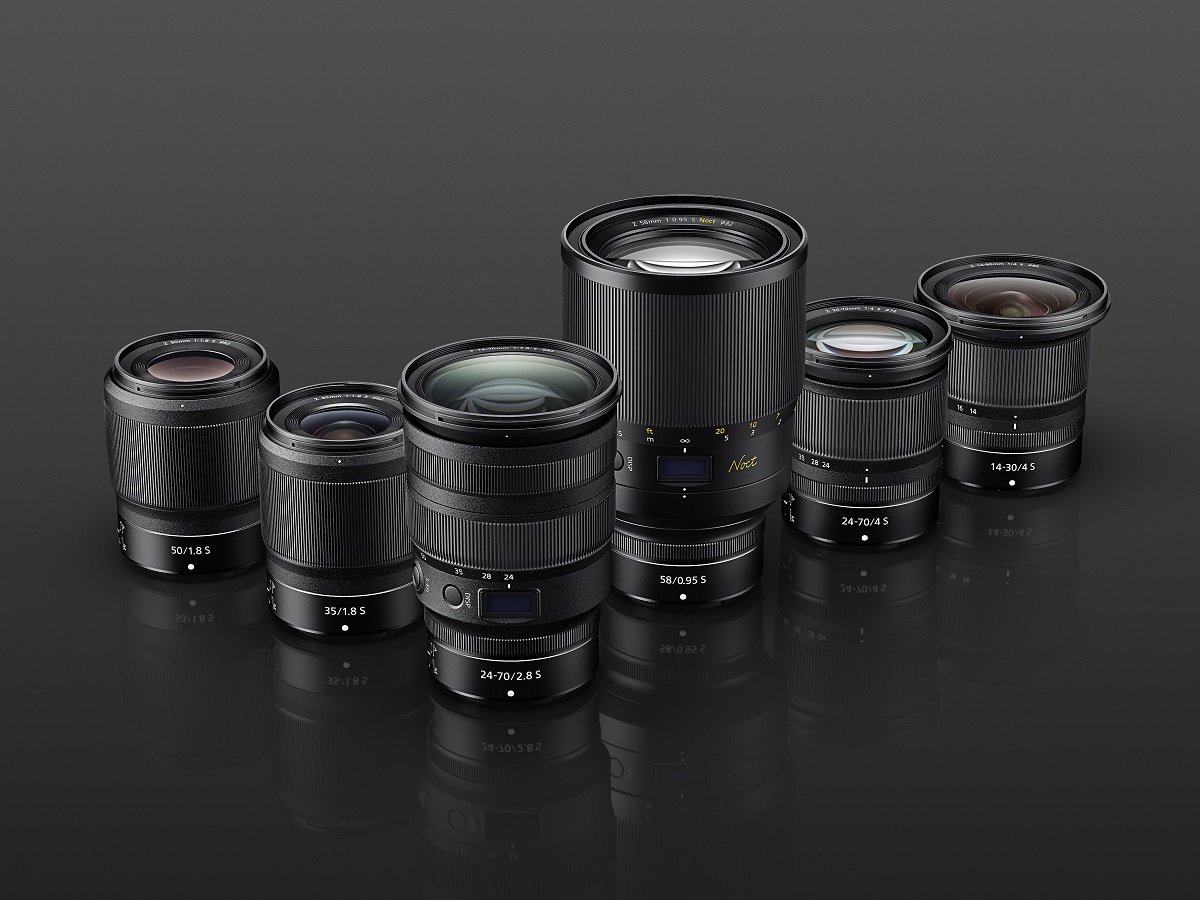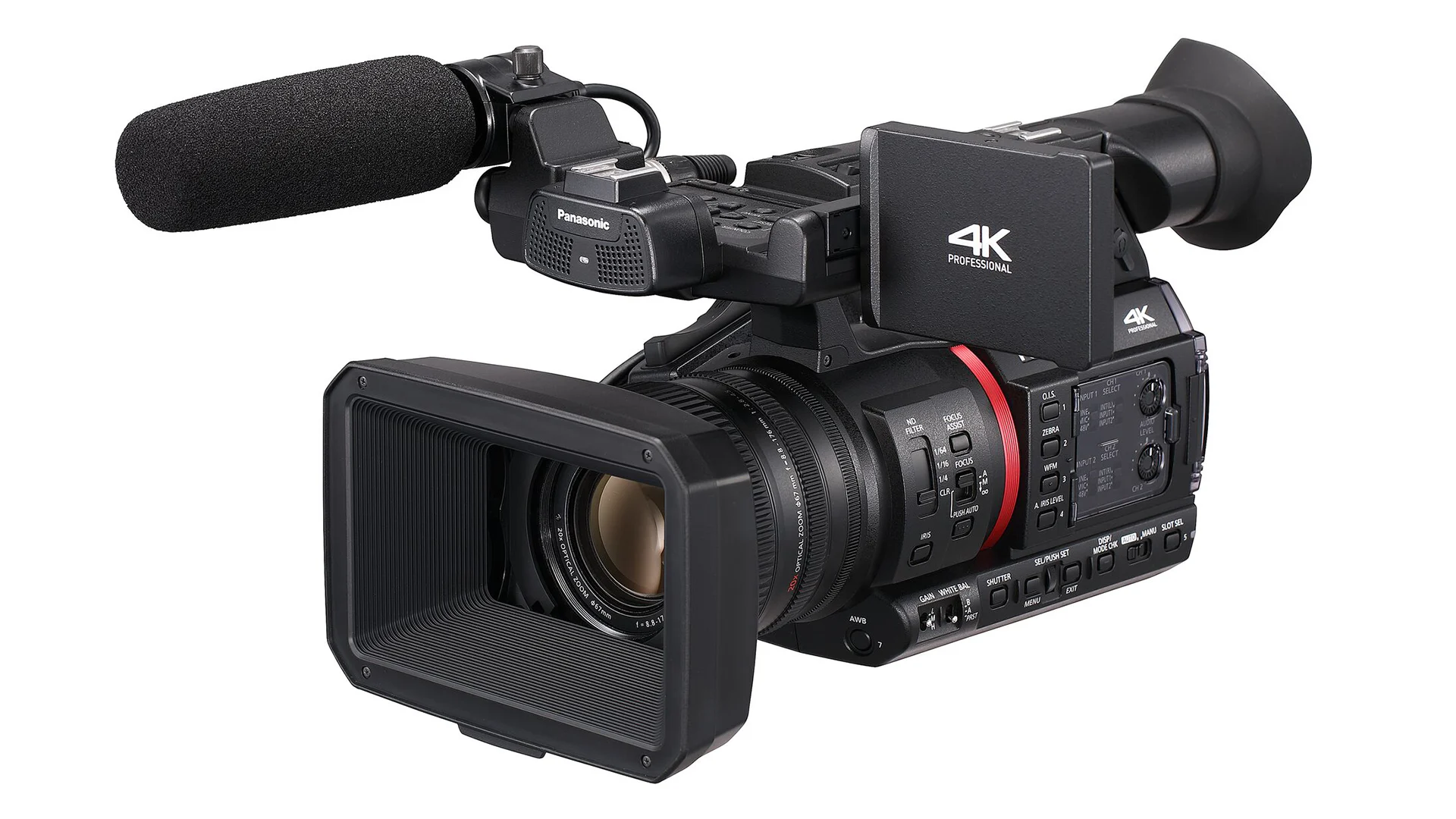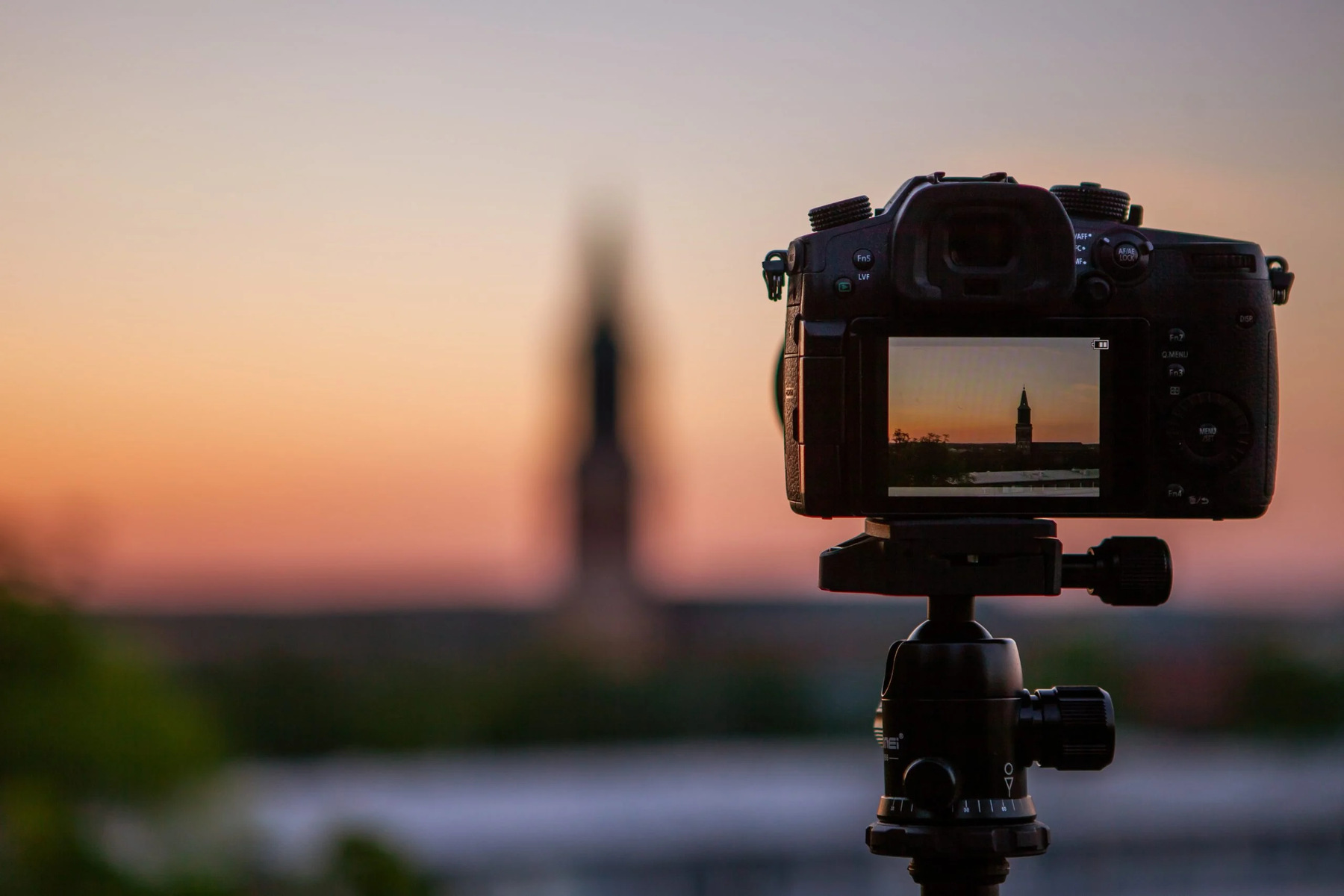Introduction
A zoom lens is a valuable tool in the world of photography, allowing photographers to quickly and easily adjust the focal length of their lens and zoom in or out to capture different perspectives of a subject. With the ability to change the focal length without physically moving closer or farther away from the subject, zoom lenses offer convenience and versatility in various photographic situations.
Whether you are a professional photographer or an amateur enthusiast, understanding the basics of zoom lenses can greatly enhance your photography skills. In this article, we will explore the definition of a zoom lens, how it works, the advantages and disadvantages of using one, different types of zoom lenses available, and some tips on choosing and using a zoom lens effectively.
By the end of this article, you will have a better understanding of the functions and capabilities of zoom lenses, enabling you to make informed decisions when selecting the right lens for your specific photography needs. So let’s dive in and discover the fascinating world of zoom lenses!
Definition of a Zoom Lens
A zoom lens is a type of camera lens that allows you to adjust the focal length within a specific range, typically indicated by a numeric value. Unlike a fixed focal length lens, also known as a prime lens, which has a fixed focal length, a zoom lens provides the flexibility to zoom in or out and change the field of view without having to physically move closer to or farther away from your subject.
With a zoom lens, you can achieve a wide range of focal lengths without changing lenses, allowing you to capture a variety of shots from different perspectives. This versatility makes zoom lenses a popular choice among photographers, as they offer convenience and adaptability in various shooting situations.
Zoom lenses are commonly denoted by two numerical values, such as 18-55mm or 70-200mm, which represent the minimum and maximum focal lengths of the lens. The first value indicates the wide-angle focal length, while the second value represents the telephoto focal length. The range between these two values defines the zoom range of the lens.
For example, an 18-55mm zoom lens has a minimum focal length of 18mm, which is considered wide-angle, and a maximum focal length of 55mm, which falls within the normal range. This lens allows you to adjust the focal length anywhere within this range, offering the ability to capture wide-angle shots as well as zoom in for closer shots.
It is important to note that the maximum aperture of a zoom lens may vary throughout the zoom range. The maximum aperture refers to the lens’s ability to gather light and determines its performance in low-light conditions. Many zoom lenses have a variable maximum aperture, meaning that the maximum aperture decreases as you zoom in. However, there are also zoom lenses with a fixed maximum aperture throughout the zoom range, known as constant aperture zoom lenses.
Overall, a zoom lens provides photographers with the flexibility to adjust their composition quickly and effortlessly, making it a versatile and indispensable tool in any photographer’s toolkit.
How Does a Zoom Lens Work?
Understanding how a zoom lens works requires a basic knowledge of its internal components. A zoom lens consists of several lens elements arranged in a specific configuration within the lens barrel. These lens elements move in relation to each other to change the focal length and provide the ability to zoom in or out.
The movement of lens elements is controlled by the zoom ring located on the lens barrel. When you rotate the zoom ring, it adjusts the position of the lens elements, altering the optical path and changing the effective focal length of the lens.
At the minimum focal length, the lens elements are positioned closer to the camera’s image sensor or film plane, creating a wider field of view. As you zoom in by rotating the zoom ring, the lens elements move farther away from the image sensor, causing the focal length to increase and the angle of view to narrow.
Within the lens barrel, there are also other mechanisms that work in conjunction with the zoom ring to ensure precise and smooth movement of the lens elements. These mechanisms include helicoid threads, cam systems, and motorized components in modern autofocus zoom lenses.
The complexity of zoom lens design lies in the challenge of maintaining image quality and sharpness throughout the entire zoom range. Lens designers carefully calculate the positions and shapes of lens elements, use advanced optical coatings, and incorporate specialized glass elements to minimize various optical aberrations, such as distortion, chromatic aberration, and vignetting.
It’s important to note that each zoom lens has a designated range of focal lengths over which it can operate optimally. Going beyond the specified zoom range, either towards the wider end or the telephoto end, may result in decreased image quality and potential distortions in the captured images.
Overall, a zoom lens utilizes the movement of lens elements within the lens barrel to change the focal length and provide the ability to zoom in or out. This mechanical manipulation combined with sophisticated optical design ensures photographers can easily adjust their composition and capture photographs from various perspectives using a single lens.
Advantages of Using a Zoom Lens
Using a zoom lens in your photography workflow offers several advantages that can greatly enhance your shooting experience and expand your creative possibilities. Here are some key advantages of using a zoom lens:
- Versatility: One of the primary advantages of a zoom lens is its versatility. With a single lens, you can capture a wide range of focal lengths, allowing you to easily switch between wide-angle, normal, and telephoto perspectives. This flexibility enables you to adapt to different shooting conditions without the need to carry multiple lenses.
- Convenience: Having the ability to zoom in or out without physically moving closer or farther from your subject offers immense convenience. This is particularly useful in situations where you may not have the freedom to move around freely or when you need to quickly adjust your composition without missing a moment.
- Efficiency: Using a zoom lens can save you time and effort. Instead of swapping lenses to achieve a different focal length, you can simply adjust the zoom ring on your lens. This efficiency is especially valuable in fast-paced environments or when capturing subjects that may move unpredictably.
- Frame composition: Zoom lenses allow you to easily control the framing and composition of your shots. You can zoom in to isolate your subject and eliminate distracting elements, or zoom out to include more of the surroundings. This control over the field of view provides greater creative freedom and the ability to capture a variety of perspectives.
- Creative possibilities: With a zoom lens, you can experiment with creative effects such as perspective compression and selective focus. Zooming in and using a longer focal length can compress the elements in your frame, creating a visually appealing effect. Additionally, you can achieve a shallow depth of field by zooming in and using a wide aperture, allowing you to isolate your subject and create a pleasing background blur.
By leveraging the versatility, convenience, efficiency, and creative possibilities offered by a zoom lens, you can elevate your photography and capture a wide range of captivating images. Whether you’re shooting landscapes, portraits, or wildlife, a zoom lens equips you with the tools to adapt to various shooting conditions and produce stunning results.
Disadvantages of Using a Zoom Lens
While zoom lenses have numerous advantages, it’s important to be aware of their limitations and potential drawbacks. Here are some disadvantages of using a zoom lens:
- Size and weight: Compared to prime lenses, zoom lenses tend to be larger and heavier due to the additional mechanisms required for zooming. This bulkiness can make them less suitable for photographers who prefer lighter and more compact gear, particularly when shooting on the go or traveling.
- Variable aperture: Many zoom lenses have a variable maximum aperture, meaning that as you zoom in, the maximum aperture decreases. This can impact your ability to effectively capture images in low-light situations or create a shallow depth of field. Constant aperture zoom lenses, although available, tend to be more expensive and larger in size.
- Image quality: While modern zoom lenses have made significant advancements in image quality, some experts argue that prime lenses still deliver superior optical performance. Zoom lenses often suffer from certain optical imperfections such as distortion, chromatic aberration, and reduced sharpness at extreme focal lengths or wide apertures. However, the extent to which these issues are noticeable varies depending on the quality and design of the specific lens.
- Price: Quality zoom lenses can be quite costly, especially those with wide zoom ranges or constant aperture capabilities. If you’re on a tight budget, investing in a high-quality zoom lens may not be feasible, and you may need to consider alternative options such as prime lenses or used lenses.
- Complexity of use: Zoom lenses often have more features and controls compared to prime lenses. This complexity can be overwhelming for beginners or those transitioning from fixed focal length lenses. Learning to utilize the zoom range effectively and understanding the impact of focal length on composition and perspective may require some practice and experimentation.
It’s important to evaluate your individual needs and shooting preferences when considering the disadvantages of using a zoom lens. While they may have certain limitations, the convenience, versatility, and creative possibilities they offer often outweigh these drawbacks for many photographers. Ultimately, choosing the right lens depends on your specific photographic requirements and priorities.
Types of Zoom Lenses
Zoom lenses are available in various types, each catering to different photographic needs and preferences. Let’s explore some of the common types of zoom lenses:
- Wide-angle zoom lens: Wide-angle zoom lenses have a focal length range that starts from ultra-wide and extends to a moderately wide angle. These lenses are ideal for capturing expansive landscapes, architectural shots, and group portraits where you want to include a large field of view. They provide a wider perspective and allow you to accentuate the sense of depth in your photographs.
- Standard zoom lens: Standard zoom lenses cover a versatile range of focal lengths, typically starting from a wide-angle to a short telephoto. They are suitable for everyday use and can be used in various situations, including street photography, travel, and general-purpose shooting. Standard zoom lenses offer a balance between wide-angle and telephoto capabilities, providing a convenient range for capturing a variety of subjects.
- Telephoto zoom lens: Telephoto zoom lenses have a longer focal length range, enabling you to bring distant subjects closer. They are commonly used in sports, wildlife, and portrait photography, where a greater reach is required. Telephoto zoom lenses allow you to capture tight frames and isolate your subjects from the background, producing impactful images with pleasing compression and creating a shallow depth of field.
- Superzoom lens: Superzoom lenses, also known as all-in-one or travel zoom lenses, offer an extensive zoom range from wide-angle to telephoto in a single lens. These lenses are highly convenient for photographers who prefer flexibility and don’t want to carry multiple lenses. However, superzoom lenses often trade off some optical quality and maximum aperture for their wide zoom range.
- Macro zoom lens: Macro zoom lenses are designed specifically for close-up and macro photography. These lenses allow you to focus on subjects at a very close distance, capturing intricate details with a life-size or greater magnification ratio. Macro zoom lenses offer versatility by providing both standard and macro focal lengths, enabling you to explore the world of macro photography while still having the option to use them for other purposes.
It’s important to consider your specific photography needs and shooting style when choosing a zoom lens. The type of lens you select will depend on the subjects you want to capture, the desired focal lengths, and your budget constraints. Whether you need a lens for landscape, portrait, wildlife, or versatile everyday shooting, there is a zoom lens available to suit your requirements.
Understanding Zoom Lens Terminology
When delving into the world of zoom lenses, it’s important to familiarize yourself with the terminology associated with these versatile optical tools. Understanding these terms will help you make informed decisions when selecting and using a zoom lens for your photography needs. Here are some key terms related to zoom lenses:
- Focal length: The focal length of a zoom lens refers to its magnification capability and is measured in millimeters (mm). It determines the angle of view and the amount of magnification or compression in the captured image. Lower focal lengths indicate a wider field of view, while higher focal lengths indicate a narrower field of view and greater magnification.
- Zoom range: The zoom range of a lens is the range between its minimum and maximum focal lengths. It indicates the extent to which the lens can zoom in or out. For example, a lens with a zoom range of 24-70mm can capture wide-angle shots at 24mm and provide moderate magnification at 70mm.
- Maximum aperture: The maximum aperture of a lens refers to the widest opening of the lens diaphragm, which regulates the amount of light entering the camera. It is denoted by the f-number and is represented by the smaller the f-number, the larger the aperture. A wider maximum aperture allows more light to enter the lens, resulting in faster shutter speeds and better performance in low-light conditions.
- Constant aperture vs. variable aperture: Some zoom lenses have a constant aperture throughout their zoom range, while others have a variable aperture. A constant aperture zoom lens maintains the same maximum aperture at all focal lengths, providing consistent exposure and depth of field control. In contrast, a variable aperture zoom lens has a maximum aperture that changes as you zoom in or out.
- Image stabilization: Image stabilization, also known as vibration reduction or optical stabilization, is a feature found in many modern zoom lenses. It compensates for camera shake and reduces blur caused by handheld shooting, allowing you to capture sharper images at slower shutter speeds. Image stabilization can be especially beneficial when shooting in low-light conditions or when using telephoto focal lengths.
- Autofocus vs. manual focus: Zoom lenses can have autofocus capabilities, allowing the camera to automatically focus on the subject, or they can be manual focus lenses, which require the photographer to manually adjust the focus. Autofocus lenses offer convenience and speed, while manual focus lenses provide greater control and precision, particularly in certain shooting situations such as macro photography or when using advanced focusing techniques.
By familiarizing yourself with these zoom lens terms, you will be better equipped to understand the specifications and features of different lenses. This knowledge will help you select the right zoom lens for your photography style and enable you to maximize its potential when capturing stunning images.
Choosing the Right Zoom Lens for Your Needs
With a wide variety of zoom lenses on the market, choosing the right one for your photography needs can be a daunting task. However, considering a few key factors can help simplify the decision-making process. Here are some important considerations to keep in mind when selecting a zoom lens:
- Intended purpose: Determine the primary purpose of your zoom lens. Are you looking for a lens for landscape photography, portrait photography, or wildlife photography? Each type of photography may require different focal lengths and features.
- Focal length range: Consider the focal length range that suits your shooting style. Determine the minimum and maximum focal lengths you need based on the subjects you plan to capture. A wider focal length range offers greater versatility, but if you have specific needs, a lens with a narrower range may be more suitable.
- Maximum aperture: Assess how important a wide maximum aperture is for your photography. If you frequently shoot in low-light conditions or desire a shallow depth of field, a lens with a wider maximum aperture can greatly enhance your capabilities in these situations.
- Image stabilization: Evaluate whether image stabilization is essential for your shooting style. If you often shoot handheld or in situations where camera shake is a concern, a lens with built-in image stabilization can help you capture sharper images.
- Budget: Determine your budget range and explore lenses within that range. Keep in mind that higher-quality lenses with superior optics and build quality generally come at a higher price point. Consider your photography goals and invest in a lens that meets your long-term needs.
- Reviews and recommendations: Read reviews and seek recommendations from photographers who have used the lenses you are considering. Pay attention to factors such as image quality, autofocus speed, build quality, and durability.
Ultimately, the right zoom lens will depend on your individual preferences, shooting style, and budget. It’s important to strike a balance between functionality and affordability. Consider renting or borrowing a lens before making a purchase to ensure it meets your specific needs.
By carefully evaluating your requirements and considering these factors, you can choose a zoom lens that complements your photography style and empowers you to capture stunning images with ease and confidence.
Tips for Using a Zoom Lens Effectively
A zoom lens can be a powerful tool in your photography kit, but using it effectively requires some tips and techniques. Here are some valuable tips to help you make the most out of your zoom lens:
- Understand your lens: Familiarize yourself with the specific capabilities and limitations of your zoom lens. Read the lens manual, experiment with different focal lengths, and learn how different settings affect the image quality.
- Compose carefully: With the ability to zoom in and out, it’s important to pay attention to your composition. Don’t rely solely on the zoom range to capture a great shot. Take the time to compose your image thoughtfully, paying attention to elements such as leading lines, framing, and the rule of thirds.
- Experiment with focal lengths: Don’t limit yourself to the mid-range of your zoom lens. Experiment with different focal lengths to discover unique perspectives and creative possibilities. Try shooting wide-angle landscapes, zooming in for detailed portraits, or using telephoto lengths to compress the scene and create interesting compositions.
- Consider depth of field: With a zoom lens, you have the flexibility to adjust the depth of field according to your creative vision. Use wider apertures to create a shallow depth of field and isolate your subject, or use smaller apertures for a greater depth of field and sharpness throughout the scene.
- Utilize image stabilization: If your zoom lens has image stabilization, make sure to utilize it effectively. This feature can greatly reduce camera shake and allow you to capture sharper images, especially when shooting handheld or in low-light conditions.
- Be mindful of lens distortion: Some zoom lenses may exhibit distortion, particularly at the wide-angle end of the range. Pay attention to straight lines in your frame and adjust your composition or use post-processing tools if necessary to correct any unwanted distortion effects.
- Experiment with creative effects: Use your zoom lens to experiment with various creative effects. Zooming in or out during a longer exposure can create dynamic and abstract images. Explore motion blur techniques, zoom bursts, and other techniques to add a sense of movement and creativity to your shots.
- Practice good technique: When shooting at longer focal lengths, camera shake can become more apparent. Use proper handholding techniques or consider using a tripod to ensure sharp images. If using a tripod, be mindful of any potential restrictions imposed by the weight and size of your zoom lens.
- Take care of your lens: Zoom lenses tend to be more prone to dust, dirt, and moisture due to their complex construction. Keep your lens clean and protected by using lens caps, filters, and lens hoods. Regularly clean the lens elements with a soft brush or cloth to maintain image quality.
By implementing these tips and techniques, you can harness the full potential of your zoom lens and capture stunning images that showcase the versatility and advantages it offers. Practice and experimentation with your zoom lens will help you develop your unique style and improve your photography skills.
Conclusion
The zoom lens is a versatile tool that provides photographers with the flexibility to adjust focal lengths and capture a wide range of subjects and perspectives. Understanding its functionality, advantages, and considerations is crucial in choosing and using a zoom lens effectively.
Throughout this article, we have explored the definition of a zoom lens, how it works, its advantages and disadvantages, different types of zoom lenses available, and important zoom lens terminology. We have also provided tips for using a zoom lens effectively, such as understanding your lens, composing carefully, experimenting with focal lengths, and utilizing creative effects.
By choosing the right zoom lens for your specific needs, considering factors like focal length range, maximum aperture, and image stabilization, you can enhance your photography and explore various genres with ease. It’s important to understand your lens’s capabilities and limitations, experiment with different focal lengths, and master the techniques that make the most of your zoom lens.
Remember, practice is key to unlocking the true potential of your zoom lens. Take the time to explore its features, experiment with different compositions and focal lengths, and fine-tune your technique. With dedication and creativity, a zoom lens can become an invaluable tool in your photographic journey.
So go ahead, embrace the versatility of a zoom lens, and capture breathtaking images that tell your unique visual stories.







